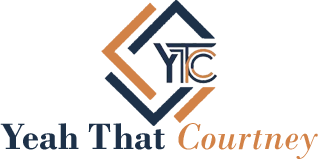Ever wonder why your scale, thermometer, or medical device suddenly gives weird readings? It might be time for a kalibraatio—the Finnish term for calibration. Whether you’re running a food lab, operating a health device, or monitoring the environment, proper calibration can make or break the integrity of your results. Let’s explore how this overlooked process can save lives, improve quality, and cut costs.
What Is Kalibraatio? A Clear Definition of Calibration
Origin and Meaning of the Word “Kalibraatio”
“Kalibraatio” is the Finnish word for “calibration.” It refers to the comparison of a measurement instrument to a standard to ensure accuracy. If a device strays from its standard, it’s recalibrated to restore correct readings.
What Calibration Means Across Industries
In labs, hospitals, kitchens, and manufacturing lines, calibration ensures that devices deliver consistent and precise measurements—crucial when health, safety, or quality are at stake.
Why Calibration Is Essential in Health, Food, and Environment
Accurate Temperature and Weight in Food Safety
In the food industry, ovens, refrigerators, and scales must be calibrated to avoid undercooked meals or unsafe storage conditions that could lead to contamination.
Precision in Medical Equipment
From blood pressure monitors to insulin pumps, incorrect readings could mean life-or-death decisions. Calibration ensures diagnostic tools remain trustworthy.
Reliable Environmental Monitoring
Air quality sensors, water testing devices, and weather instruments all depend on accurate calibration for valid data used in regulations and research.
Different Types of Calibration and Their Functions
Temperature Calibration
Thermometers and climate control systems must be aligned to accurate heat references to avoid error, especially in food production and healthcare.
Mass and Weight Calibration
Industrial and kitchen scales need precise recalibration using certified weights to avoid shipping errors or cooking disasters.
Electrical Calibration
Voltmeters and current meters in manufacturing require alignment to electrical standards to ensure safe and efficient operations.
How Often Should Kalibraatio Be Performed?
Industry Standards and Compliance
According to ISO and GMP guidelines, calibration should occur annually or biannually, depending on the sensitivity and usage of the equipment.
When Use Frequency Affects Accuracy
Devices used daily or under harsh conditions may require more frequent checks. The rule? The more critical the tool, the more often it needs calibration.
Step-by-Step Guide to the Calibration Process
Preparation and Pre-Check
Start by cleaning the device and ensuring it’s in good working condition. Environmental conditions like temperature and humidity should be stable.
Reference Measurement and Adjustment
Use certified calibration equipment to compare readings. If the device is off, adjustments are made manually or digitally.
Final Report and Documentation
Every calibration ends with a traceable report showing pre- and post-calibration data, ensuring transparency and regulatory compliance.
Business Benefits of Proper Calibration
Reduced Waste and Rework
Accurate machines mean fewer production errors, which translates to cost savings and better resource use.
Meeting ISO and GMP Quality Standards
For companies in regulated industries, regular kalibraatio is a requirement—not an option. It ensures products meet both legal and customer expectations.
Common Calibration Mistakes to Avoid
Delayed Calibration Schedules
Skipping calibration leads to unreliable readings that can compromise product quality and safety.
Mishandling of Sensitive Equipment
Improper handling can damage instruments and make calibration ineffective. Staff training is crucial.
When to Use Professional Calibration Services
Certified Labs vs. In-House Calibration
While some tools can be calibrated internally, critical instruments should go to accredited calibration labs with certified reference standards.
Traceability and Accreditation
Look for ISO/IEC 17025-accredited labs. They provide traceability to national or international standards—a must for high-stakes industries.
Future of Kalibraatio: Digital and Smart Calibration
Automation and Real-Time Monitoring
Modern devices offer self-calibrating features, reducing human error and downtime. Automated alerts tell you when recalibration is needed.
Integration with IoT Devices
Smart sensors connected via IoT now allow for remote calibration checks and real-time accuracy tracking, transforming the way industries maintain quality.
FAQs About Calibration and Kalibraatio
- Is calibration the same as adjustment?
Not exactly. Calibration checks the accuracy; adjustment corrects any error.
- What’s the risk of using uncalibrated tools?
Unreliable data, product recalls, safety hazards, and regulatory penalties.
- Can I calibrate tools myself?
Some basic tools, yes. For critical equipment, always use certified professionals.
- How long does a typical calibration take?
Anywhere from 30 minutes to a few hours, depending on complexity.
- Is there a digital way to monitor calibration needs?
Yes, many IoT-enabled devices have built-in tracking and alerts for recalibration.
Final Thoughts: Why You Should Care About Kalibraatio
In an age where precision defines quality and safety, calibration—kalibraatio—is non-negotiable. Whether you’re baking sourdough, running diagnostics, or monitoring the environment, accurate tools lead to better outcomes. Small adjustments can make a huge impact.

